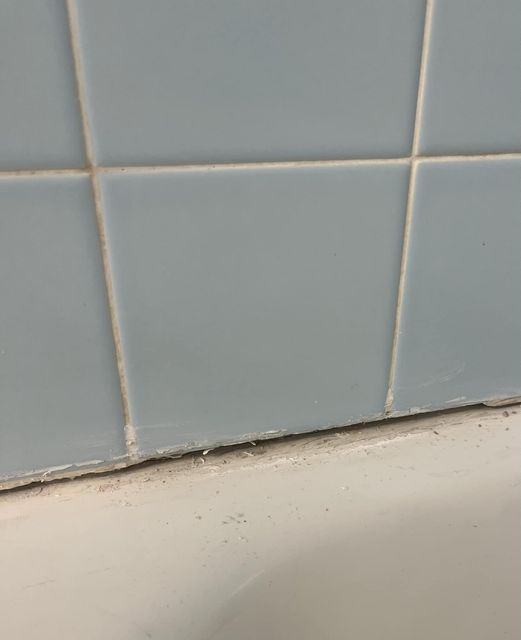Should I use a gap filler before recaulking the tub in our 60s-built house with a noticeable gap between the tile and tub?
1 year ago
Last Updated: May 2, 2024
I’m in the process of recaulking one of the tubs in our new place, which was built back in the 60s. My husband took out the old caulk and I noticed that there’s a pretty big gap between the tile and the tub, about 1/16″ in some spots. Do you think I should use some gap filler before I start caulking?

Nah, I wouldn’t do that.
Actually, I would recommend investing in the top-of-the-line white silicone specifically designed for mold and mildew. It’s worth it to caulk with the best.
After you’ve cleaned up any leftover dirt, grime, or oil, go ahead and apply some silicone. Make sure to use a high-quality silicone caulking.
Nope, but definitely do some prep work first! Get a cheap 2″ brush and thoroughly clean the tub/wall joint while the tiles are dry. Then, use rubbing alcohol, acetone, or methyl ethyl ketone with the same brush to get rid of any soap or debris. Make sure to let it evaporate for about 14 minutes. Finally, grab a caulking tube of microban “Kwick Seal”. Cut a small opening, around 3/16″, and poke it for better flow. Have plenty of paper towels ready to wipe your fingers after tooling. Dispose of excess caulk after tooling with your smallest finger. Keep the application as continuous as possible. Wait 6 to 8 hours before the next shower. I hope this information is helpful!
Simply grout it and wait for it to dry, then apply a nice bead of 100 percent silicone. Avoid using painter’s caulk to cut costs. It’s important to use 100 percent silicone for best results.
No worries! Make sure to clean it thoroughly with lacquer thinner to remove any residue, cleaning products, and soap scum. Try using GE silicone 2 Bath caulk. The fast-drying formula is amazing. Just be ready for it. Use denatured alcohol for tooling on a rag and wear vinyl gloves. You can use masking tape, but remember to work swiftly with tooling and tape removal to avoid messing up the caulking. If you tool too slowly, it might start to set and drag oddly. The same goes for where you begin and end. Avoid overfilling the area with caulk! Aim for a nice, smooth, consistent bead, and push it into the joint.
Recommends using “GE silicone 2 Bath caulk.” According to him, this is the best option available to the average consumer outside of specialty contractor stores.
Just got his hands on the new 3-hour ready stuff and says it’s just as great as Dow999A. The smell is identical. Plus, it’s super easy to find. He knows where to pick up the professional-grade stuff, either at a glass supplier or the local hardware store AIH.
Sounds good.. just apply some caulk
That sounds like the ideal gap size for movement. I would start by thoroughly cleaning the two areas where the caulking will be applied. After ensuring they are free of old caulk and any debris, I would clean them with rubbing alcohol before applying the caulking. I recommend using Dap’s AMP (Advanced Modified Polymer) Kitchen, Bath, and Plumbing Sealant. Best of luck!
Give it a good cleaning and caulking, that should do the trick
Make sure to clean everything thoroughly! Personally, I prefer using alcohol as it doesn’t leave any residue and helps with sealing.
Can the tub be lifted on the frame/legs to decrease the space?
They actually have grout available in a tube now. It’s perfect for fixing small areas.